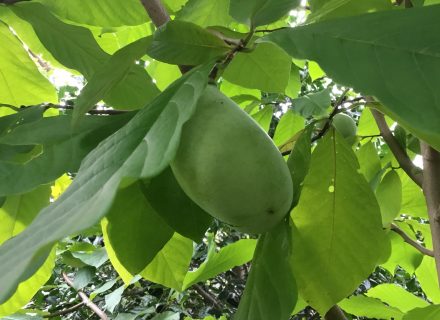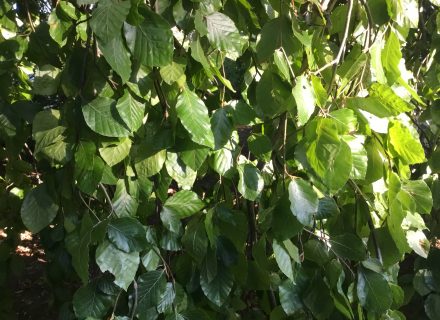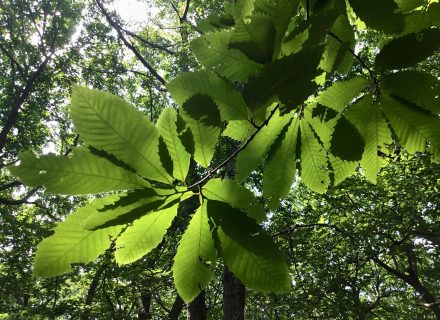Latin Name: Ailanthus altissima
Locations: Tree of heaven thrives (too well!) throughout the Island. One is tucked to the side of the library parking lot; a cluster of small trees flourish along the edge of Coecles Harbor at the intersection of Cobbetts Lane and Ram Island Road.
Tree stats: Native to China, tree of heaven got its poetic name from the Moluccan ailanto or ai lanit, which means “reaching for the sky” or “sky tree.” Indeed, it can grow to 100 feet high. Tree of heaven was introduced to America in 1784, quickly becoming a popular urban street tree. It grows fast, is immune to pollution, and is coarsely handsome. Author Romeyn Beck Hough, in his 1907 Handbook of the Trees of the Northern States and Canada, praises tree of heaven for its “tropical appearance” and “large bunches of brilliantly colored fruit.” Its bionic knack for pushing through concrete cracks and surviving practically anywhere is celebrated in Betty Smith’s A Tree Grows in Brooklyn.
Not so heavenly: When the male trees bloom, their flowers emit a foul odor, thus another common name, “stinking sumac.” Other liabilities include reproductive vigor, thanks to those “large bunches of brilliantly colored fruit” and a suckering habit that allows tree of heaven to overwhelm native areas. It’s also allelopathic, suppressing the growth of other trees and plants in its vicinity. Thus, another common name, the “tree of hell.” Google “tree of heaven,” and you’ll find innumerable methods for its eradication.
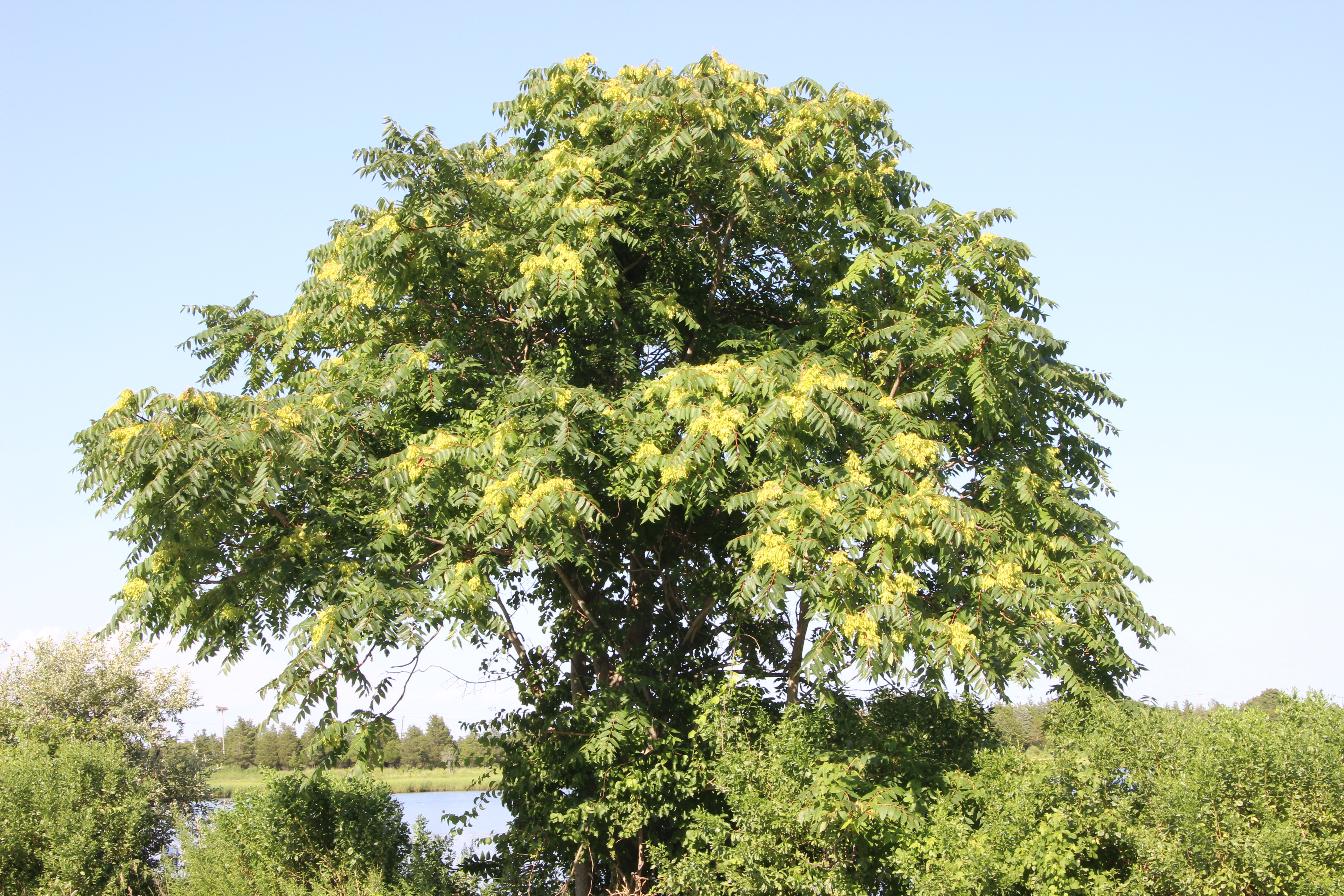
Insect to the rescue?: The spotted lanternfly is a non-native planthopper that arrived in Pennsylvania in 2012. The adult is one inch long and a half-inch wide and a striking combination of gray, black, red and yellow. In its various stages of growth, the insect relishes the tree of heaven.
Maybe not: Unfortunately, the spotted lanternfly also has a taste for fruit trees, grape and hop vines, maple, walnut, and numerous other trees and plants, presenting a threat to residential landscapes, forests, vineyards, farms, and nurseries. The adults and nymphs damage hosts by feeding on their sap. They also excrete a sticky residue that encourages black sooty mold, which interferes with photosynthesis and disfigures fruit. Spotted lanternfly is now present in several states as well as Suffolk County.
Citizens alert: We can do our part by looking out for spotted lanternfly adults or egg masses that can be found on tree trunks, rocks, garbage cans, and cars. For further information check out the New York State Integrated Pest Management-Cornell University website at nysipm.cornell.edu for more photos and links to other resources.
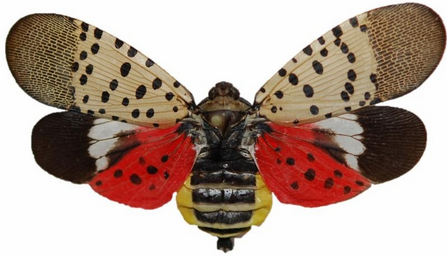
Photos (trees): Tim Purtell


